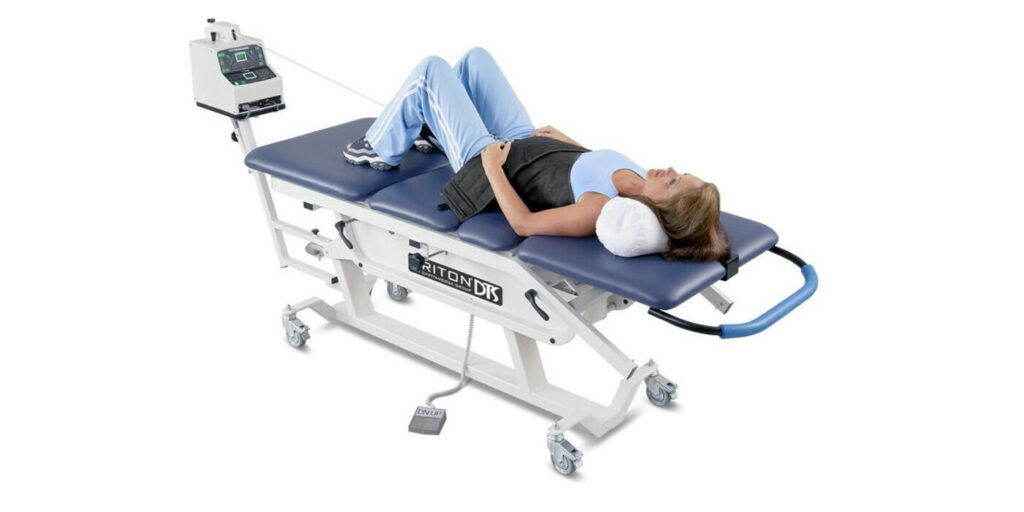Low power traction therapy
“Managing pain, restoring comfort – one step at a time.”

Low-power traction therapy is a type of therapy that involves the use of mechanical force to stretch and mobilize the spine or other joints in the body. This therapy is typically used to treat conditions such as herniated discs, sciatica, and spinal stenosis.
During a low-power traction therapy session, the patient lies on a special table that has straps and pulleys attached to it. The straps are attached to the patient’s body in specific areas, and then a small amount of force is applied to the straps, which creates a gentle stretch on the spine or joint.
The force used in low-power traction therapy is typically much lower than in traditional traction therapy, making it a safer and more comfortable option for patients. Additionally, low-power traction therapy can be performed in a clinical setting or at home with the use of a portable traction device.
If you are considering low-power traction therapy, it is important to discuss your medical history and current symptoms with a qualified healthcare professional to determine if this therapy is appropriate for you.
